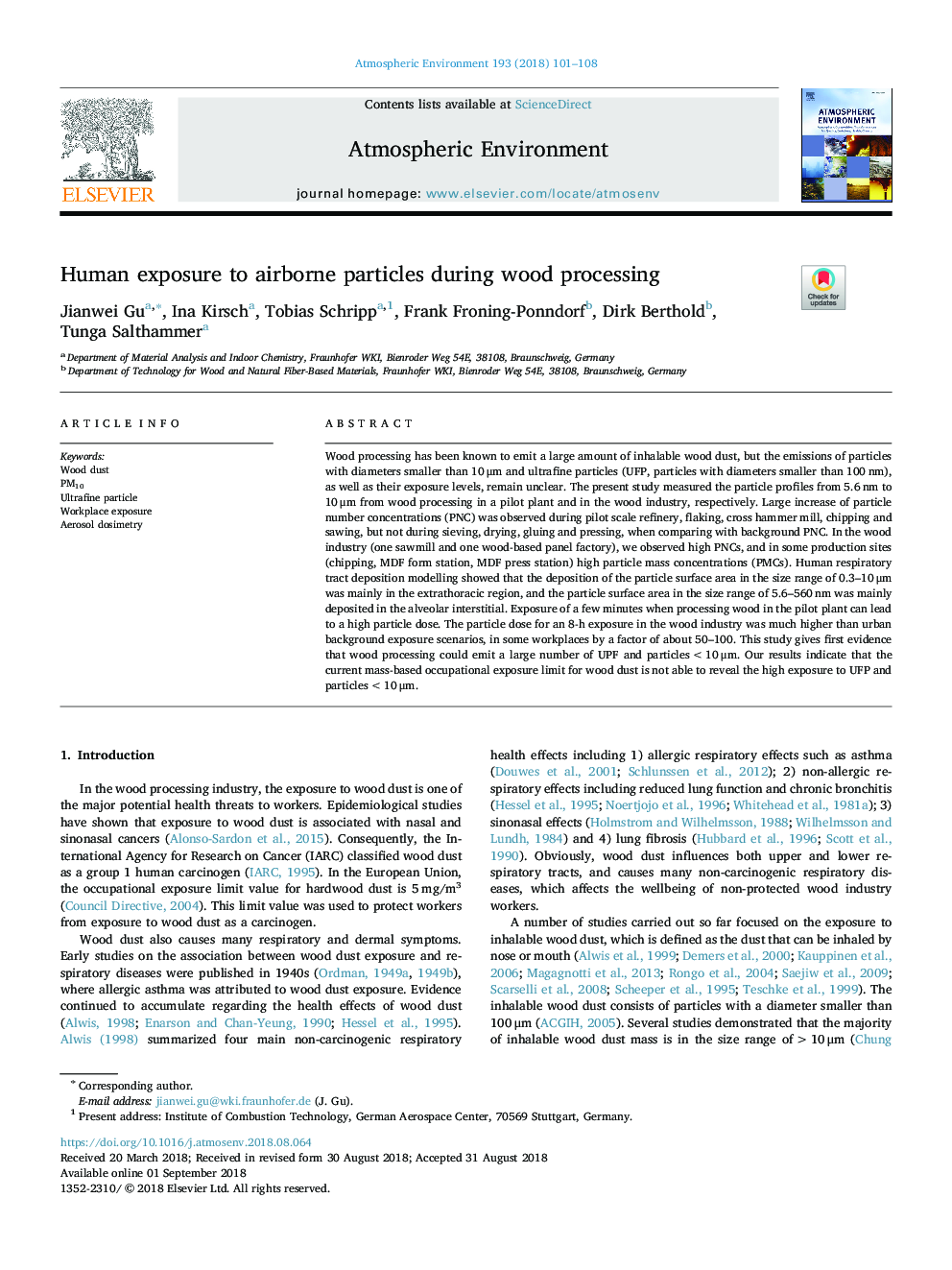| Article ID | Journal | Published Year | Pages | File Type |
|---|---|---|---|---|
| 10149605 | Atmospheric Environment | 2018 | 8 Pages |
Abstract
Wood processing has been known to emit a large amount of inhalable wood dust, but the emissions of particles with diameters smaller than 10â¯Î¼m and ultrafine particles (UFP, particles with diameters smaller than 100â¯nm), as well as their exposure levels, remain unclear. The present study measured the particle profiles from 5.6â¯nm to 10â¯Î¼m from wood processing in a pilot plant and in the wood industry, respectively. Large increase of particle number concentrations (PNC) was observed during pilot scale refinery, flaking, cross hammer mill, chipping and sawing, but not during sieving, drying, gluing and pressing, when comparing with background PNC. In the wood industry (one sawmill and one wood-based panel factory), we observed high PNCs, and in some production sites (chipping, MDF form station, MDF press station) high particle mass concentrations (PMCs). Human respiratory tract deposition modelling showed that the deposition of the particle surface area in the size range of 0.3-10â¯Î¼m was mainly in the extrathoracic region, and the particle surface area in the size range of 5.6-560â¯nm was mainly deposited in the alveolar interstitial. Exposure of a few minutes when processing wood in the pilot plant can lead to a high particle dose. The particle dose for an 8-h exposure in the wood industry was much higher than urban background exposure scenarios, in some workplaces by a factor of about 50-100. This study gives first evidence that wood processing could emit a large number of UPF and particles <10â¯Î¼m. Our results indicate that the current mass-based occupational exposure limit for wood dust is not able to reveal the high exposure to UFP and particles <10â¯Î¼m.
Related Topics
Physical Sciences and Engineering
Earth and Planetary Sciences
Atmospheric Science
Authors
Jianwei Gu, Ina Kirsch, Tobias Schripp, Frank Froning-Ponndorf, Dirk Berthold, Tunga Salthammer,
